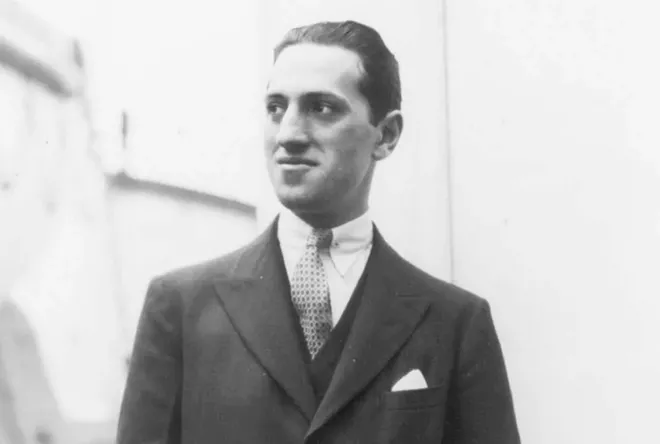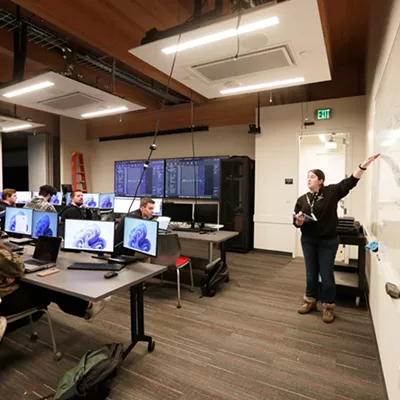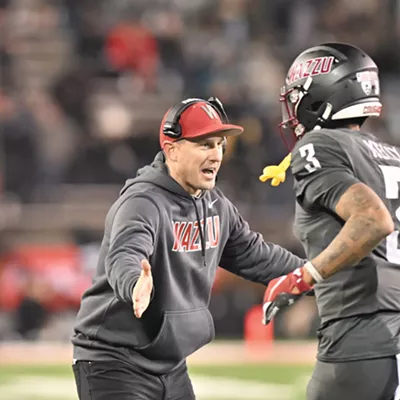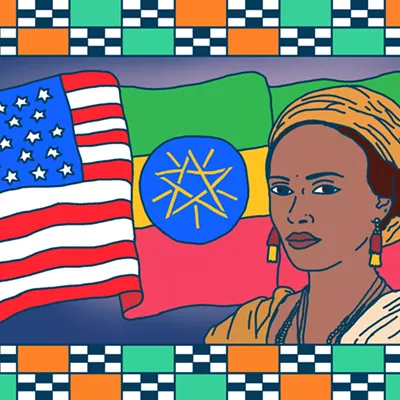The short, playful "glissando," or "glide," up the scale was meant as a sort of joke by the clarinetist before beginning one of the hurried rehearsals in 1924.
George Gershwin, the classical American composer, wasn't joking, though. He loved it, and that little bit of improv became the iconic introduction that was billed as "An Experiment in Modern Music," a combination of classical orchestra and jazz music.
Legend has it that Gershwin's older brother, Ira, a lyricist himself, was reading the New York Tribune one morning when he came across the note that his younger brother had been commissioned to write a "jazz concerto" ahead of a performance that was scheduled in less than six weeks. All of this was news to George Gershwin, who, at the moment, was buried in a different music project.
Originally titled "American Rhapsody," Gershwin completed the new piece, albeit hastily, in time for a Feb. 12 premiere in New York. In attendance were the musical heavyweights of the time, Russians Sergei Rachmaninoff and Igor Stravinsky and Austrian Fritz Kreisler, to name a few.
At the last-minute suggestion by his brother, Gershwin changed the name to "Rhapsody in Blue," in an ode to the paintings of James McNeill Whistler, to reflect the joining of the classical European style and the burgeoning jazz-swing of American music, says Dr. Jody Graves, an EWU professor who will be performing the concerto on March 14 with the Spokane Jazz Orchestra.
"We had a few American composers, but not at the national level like this," Graves says of the '20s. "This is where Gershwin plays a huge role here, in establishing not only his name and music, but that Americans were contributing significantly to the music scene."
In a musical sense, Gershwin's "Rhapsody in Blue" was Americans "claiming our countryhood," Graves says.
"Bringing the jazz idiom into the light of day on the concert stage, out of those clubs or speakeasies and things like that, that was huge," she says. "It rattled the cages of all the traditionalists about what a quote-unquote 'concerto' was supposed to be, let alone what genre of music you would put on a regular concert stage."
The man responsible for commissioning Gershwin to compose "Rhapsody" without his knowledge was the conductor Paul Whiteman, sometimes referred to as "The King of Jazz." Whiteman was also responsible for helping launch the careers of Spokanites Bing Crosby and his musical partner Al Rinker.
Inspired by Rinker's older sister, jazz singer Mildred Bailey, Crosby and Rinker decided to give up on the "high school dances and illicit bathtub-gin-fueled parties" and left Spokane in a Model-T Ford in 1925, according to Washington state history website historylink.org. Through Whiteman, Crosby and Rinker formed a trio with Harry Barris, known as the Rhythm Boys in 1927. Whiteman would also hire Bailey in 1929 "on the spot," after hearing her perform at a house show, and become "the first national-level orchestra leader to feature a female vocalist — a historic moment that soon caused 'other dance bands in the copycat fashion of show business' to add 'female singers too.'"
Spokane itself wasn't known for being a thriving jazz hub in the '20s the same way that Chicago, New Orleans and Kansas City were. But Spokane had a number of music venues. Most notably, there was the Auditorium, formerly at Main and Post, where in 1917 a young Crosby would allegedly decide to become a professional musician. There were other venues too, like the Manito Park Social Club, the Pekin Café, Lareida's Dance Pavilion and speakeasies like Charlie Dale's.
Radios were also quickly becoming popular consumer items in the '20s, and improving kilowattage throughout the country was crucial to the spread of jazz, says Spokane Jazz Orchestra Director Don Goodwin, who's responsible for arranging the Gershwin tunes for the upcoming show, with the added help of the SJO's Michael Gerety.
Blues, jazz, ragtime and country musicians were all gaining in popularity around this time, too.
"All of this is happening at the same time and they're all kind of borrowing from each other and learning from each other as well," Goodwin says, which is very much in the spirit of "Rhapsody in Blue." "You can't overstate how important it was for [Gershwin] and American music and the idea of crossing genres."
In addition to "Rhapsody in Blue," Goodwin says the orchestra will also be performing variations of other Gershwin pieces, like "Summertime" and "I Got Rhythm."
"Conductors are always thinking, 'How can we make music a more collaborative experience from all walks of life to enjoy?' In the art form of 'high art music' in this sense, there are traditions that I think are continually being stretched and pushed, and Gershwin was one of those," Graves says. "I think that's part of what Gershwin would appreciate today: How many people have taken his songs and just gone crazy with them." ♦
Rhapsody In Blue: The Music of George Gershwin • Sat, March 14 at 7:30 pm • $32/$19 student • Bing Crosby Theater • 901 W. Sprague • 227-7638




















